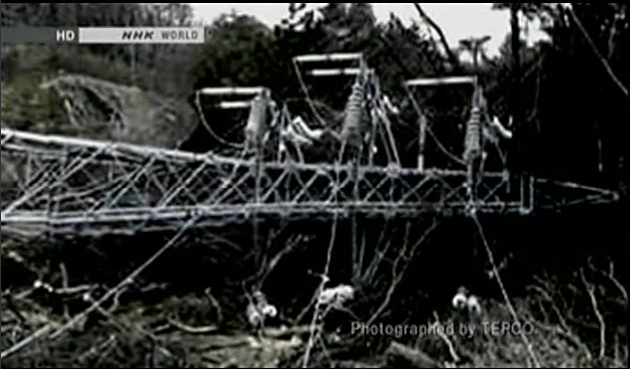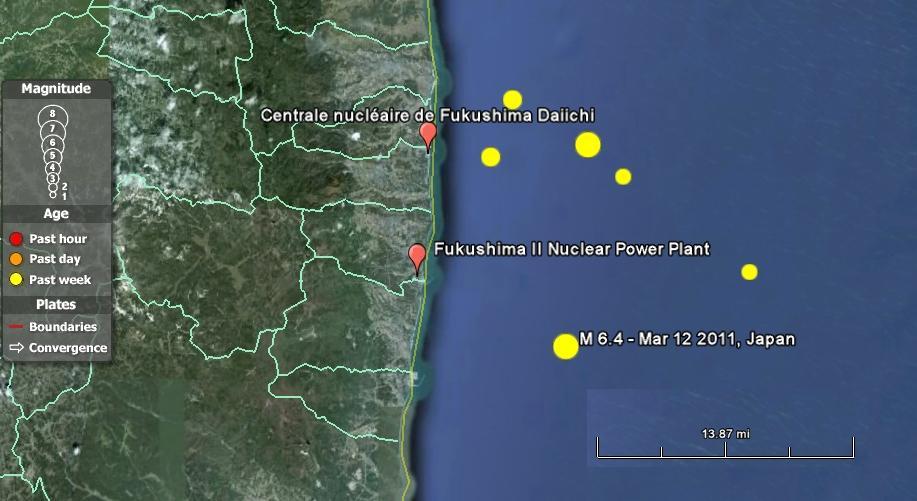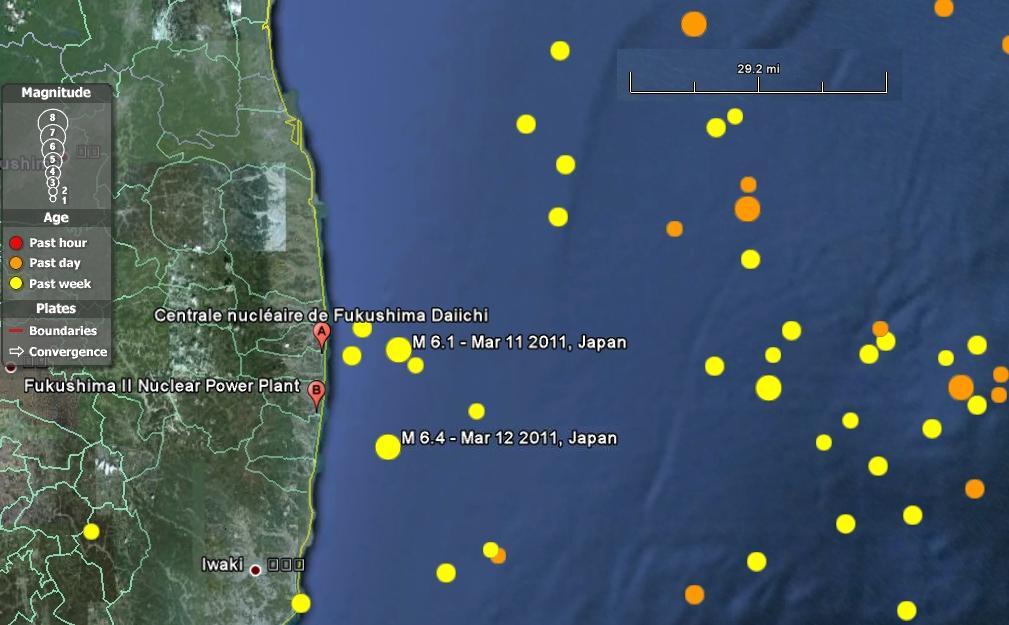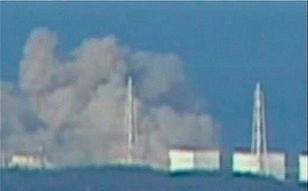 In September 2011, the Nuclear Regulator Commission (NRC) released some of its internal documents of what happened during the first month of the Fukushima crisis. These Freedom Of Information Act (FOIA) documents exposed just how much the NRC has been captured by the US nuclear industry in attempts to protect the industry rather than public safety. Here is the story of the dramatic censorship of a key event as yet to be told publicly. In particular was one specific document that exposes the fact that the unit 1 explosion on March 12th was preceded by a major earthquake (6.4m) 7 minutes before it exploded. To date, there has never been any public acknowledgement of this dramatic news.
In September 2011, the Nuclear Regulator Commission (NRC) released some of its internal documents of what happened during the first month of the Fukushima crisis. These Freedom Of Information Act (FOIA) documents exposed just how much the NRC has been captured by the US nuclear industry in attempts to protect the industry rather than public safety. Here is the story of the dramatic censorship of a key event as yet to be told publicly. In particular was one specific document that exposes the fact that the unit 1 explosion on March 12th was preceded by a major earthquake (6.4m) 7 minutes before it exploded. To date, there has never been any public acknowledgement of this dramatic news.
The Tohoku Tsunami Spin: Take Two: The Missing Quake that caused the Explosion of Unit 1
If there is one thing the whole world knows, its the claim that the Tsunami was the last straw in destroying the backup power that resulted in the reactor meltdowns and spent fuel pond crisis. There’s a reason why every nuclear expert on the planet wanted the world to hear this and that’s because there is also the claim that Japan is the only place such a massive Tsunami could take place! Actually there is more than a bit of debate about this, but there was at least one other event they have completely censored from coverage anywhere. The earthquake on March 12th.
There is no doubt that the 9.0 earthquake on March 11th played the central role in destroying offsite power, resulting in the dreaded Station Blackout (SBO) at Fukushima Daiichi. The Daiini facility barely escaped the same fate as just one of its remote power sources survived. Even though the nuclear reactors were supposedly shutdown automatically after the quake hit they still need to have electricity to keep the nuclear fuel from melting down. But there are many important pieces of information being left out that are critical to understanding what did take place. The Japanese government is still investigating the disaster for there are very high stakes at play including billions of dollars. (Update note: In July 2012 the Japanese Diet released a report calling the Fukushima a man made disaster that could have been avoided).
However, in what has to be one of the most important details that is missing:
on page 65 of a NRC FOIA release there is a 3 page summary of the Fukushima crisis prepared by the the Japanese Ministry of Economic, Trade and Industry on March 13th. On page 3 of the release under part (4) the very last bullet point says the following:
“…(15:29, March 12). A large motion occurred due to an earthquake with close epicentre and an large sound was issued near Unit l and smoke was observed.”
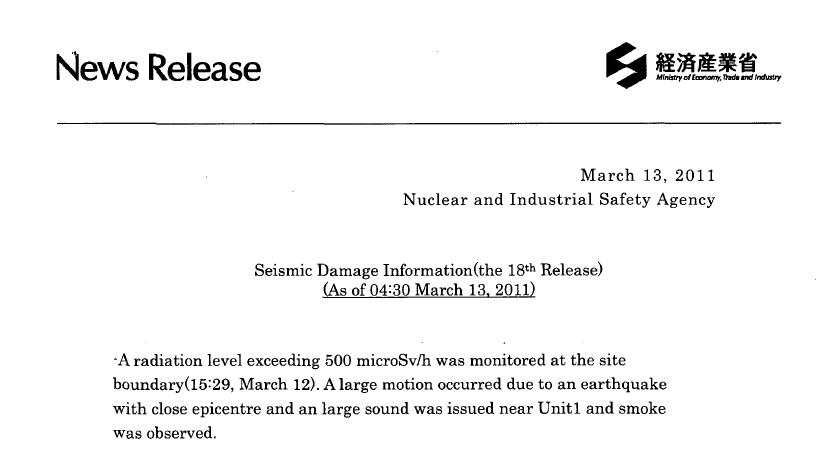
Seven minutes later Unit one explodes. In the official timeline there is no mention of the 15:29 aftershock. Here’s the Wikipedia detailed timeline of events. There is however a mention of people being evacuated started at 15:30. You think!!! Fukushima experiences a major aftershock followed by a large sound and then smoke! I’d run like hell, too!
As can be seen in these two USGS maps showing a substantial number of earthquakes that took place far closer than the main quake, there was a 6.1 aftershock on the 11th less than ten miles from Fukushima which was followed by a 6.4 magnitude aftershock on March 12th less then 30 miles away.
Earthquakes don’t just happen out of thin air. They break along fault lines. Wouldn’t this indicate that there is a fault located right off the coast of Fukushima that nobody has been aware of? Whose fault is it that this wasn’t known? There has been no discussion publicly about the fault that these closer aftershocks or were they really separate earthquakes on another fault that was set off as a result of the 9.0 quake?
In a single nuclear reactor there are hundreds of miles of pipe and electrical wiring. The dozens of aftershocks did more than just destroy remote power. They broke critical safety systems, lost the capacity to monitor their innumerable gauges to now pressures and temperatures, ripped apart electrical systems and computer controls, as well as damaged pipes. Throughout the facility and even in the highly fortified command center emergency power was lost. This wasn’t just because there was a lack of power.
On a partial media report of April 1st 2011, TEPCo (the owner of Fukushima) announced that the reactors had experienced peak ground accelerations at the facility about 1/5 of the maximum 2.7g recorded from 9.0 Tohoku earthquake. They acknowledged that they had not looked at all of the seismic data or to be more than likely, were cherry picking the data when they acknowledged that g forces were larger than the facility was designed to withstand.
The media fails to mention the large 6.1 earthquake (I’m labeling it that) rather than aftershock that happened on the 11th less than 10 miles from Fukushima or the 6.4 quake that happened minutes before Unit 1 exploded on March 12th.
As mentioned the Peak Ground Acceleration (PGA) detected for the quake was 2.7g for the big 9.0 quake. The lower PGA’s at Fukushima has a lot to do with the fact that Fukushima was nearly 110 miles away from the epicenter. In the 2010 earthquakes in New Zealand even quakes as small as 6.3 can generate very large g forces nearly as big as those experienced from Tohoku simply because the epicenter of the quake took place on land rather than offshore. After the nuclear industry has spent months promoting its theory of what happened do you think the Japanese government, which is heavily invested in nuclear power will ever tell the public about the fact that a missing earthquake played a role in the explosions and Black Swan events of 3-11?
Go Here to see the growing list of Fukushima Scandals
In the first days of the disaster the US’s Nuclear Regulatory Commission (NRC) posted a warning to all US citizens in Japan to evacuate Americans who were within 50 miles of Fukushima. It should be noted that the NRC only requires evacuation around US reactors for the closest 10 miles. Organizations and individuals across the country immediately filed Freedom Of Information Act (FOIA) requests with the NRC to obtain details of why they would do this. During the June Fukushima lessons learned with meeting with former Commissioner Jaczko and Prime Minister Kan, the response was that the NRC saw the alert as merely a travel advisory. The fact that they wouldn’t have required the same kind of evacuation out 50 miles here in the US is still an example of just how much they don’t think a major incident would happen within the US and are thus not prepared to protect the public in the case of such a major disaster.

